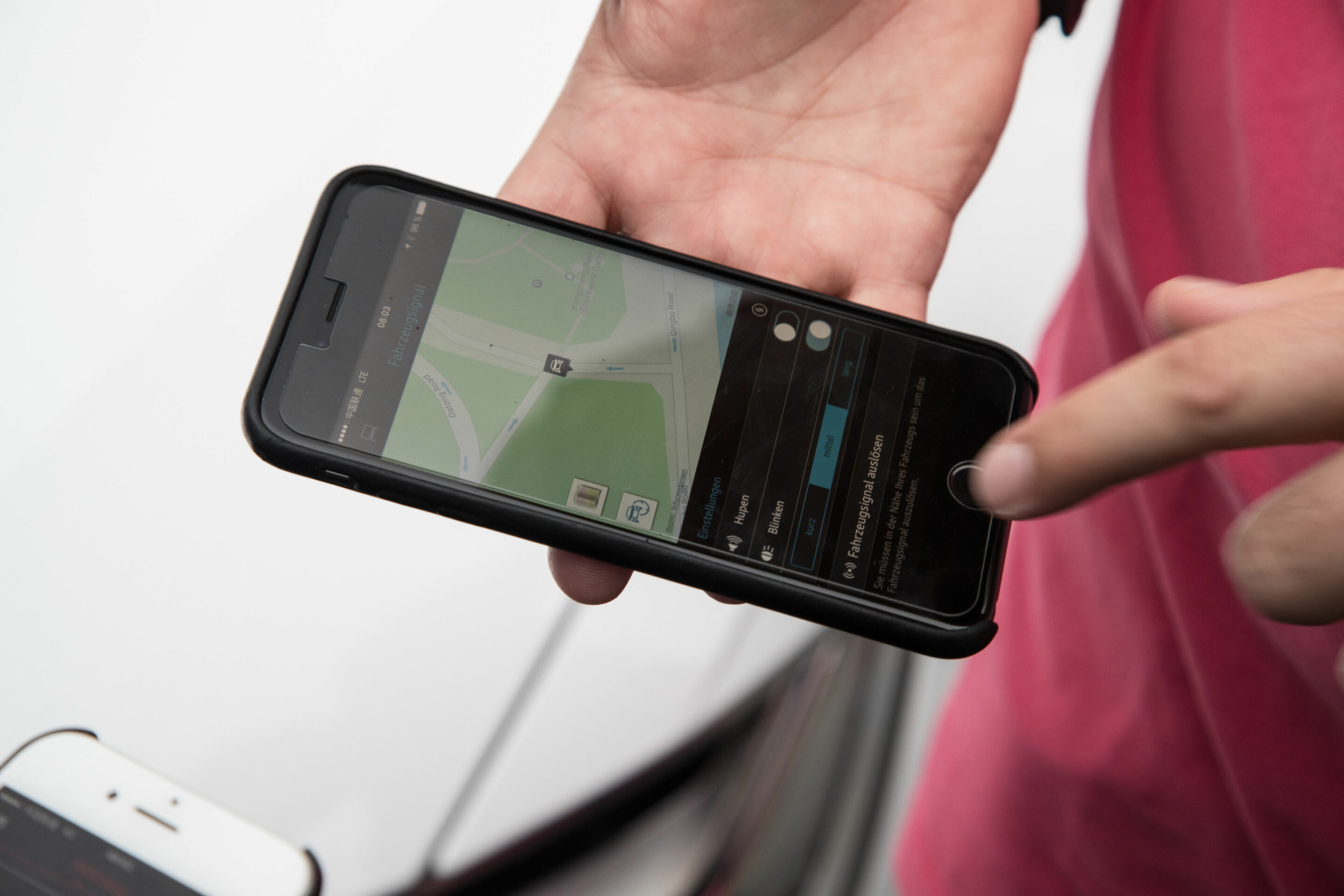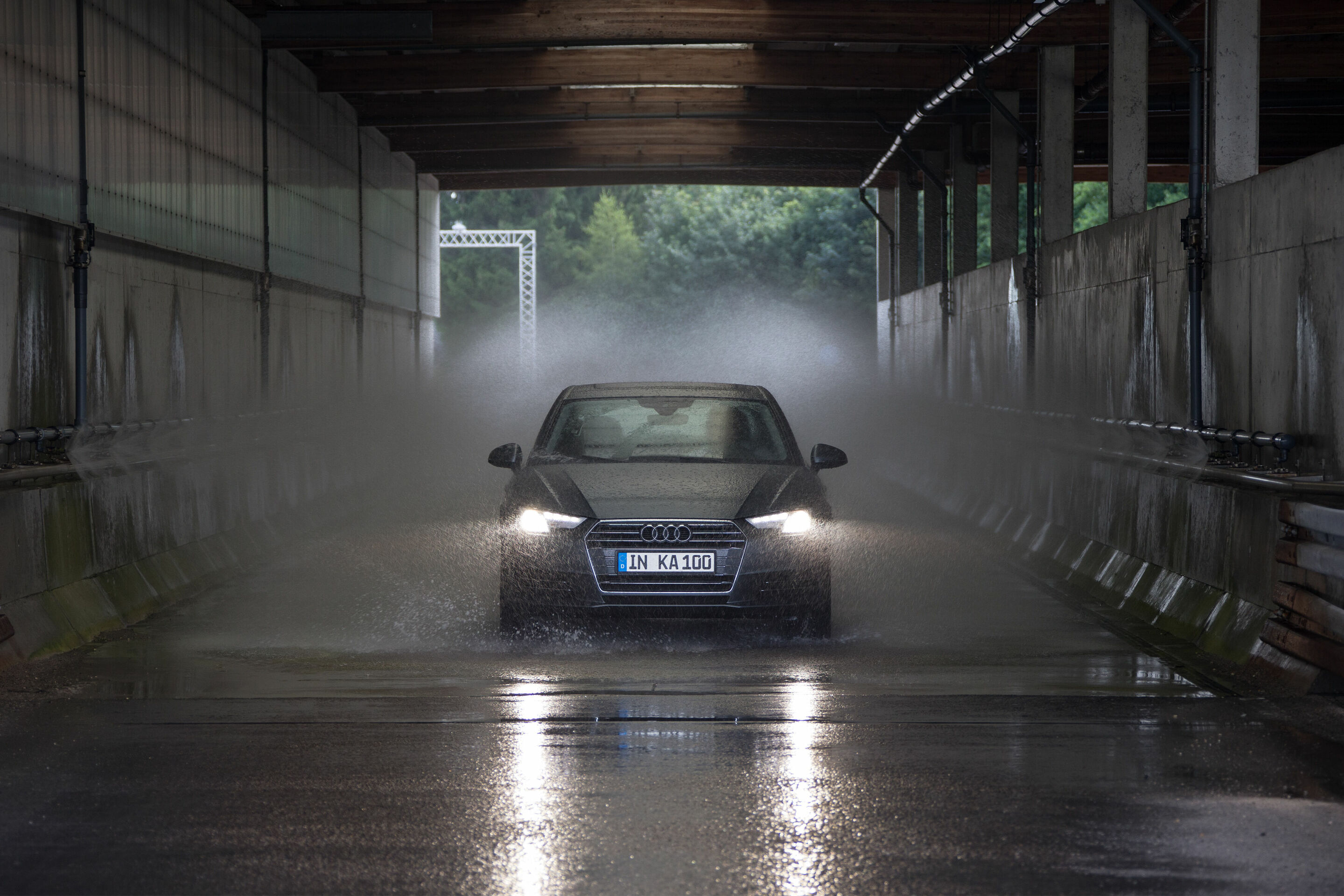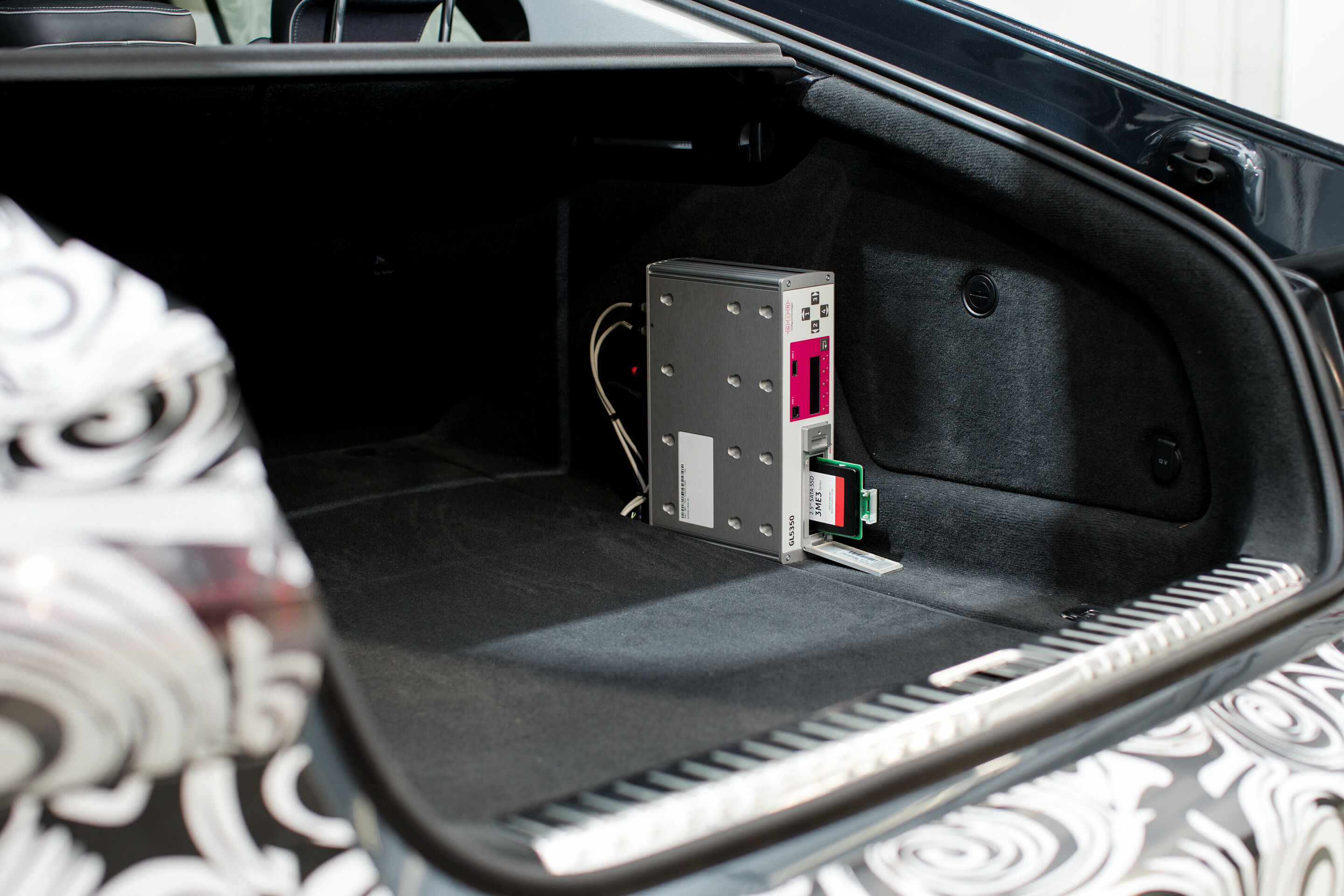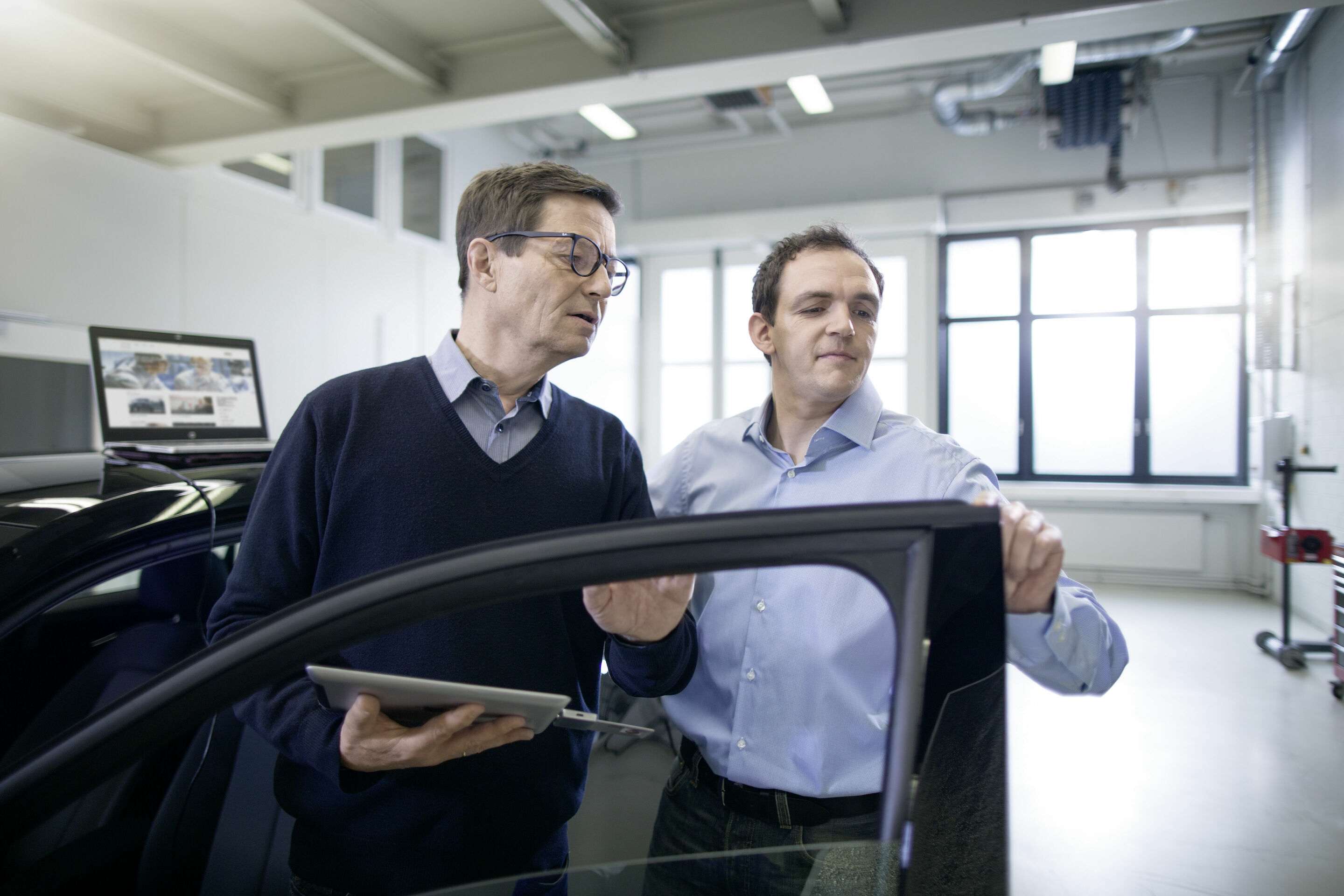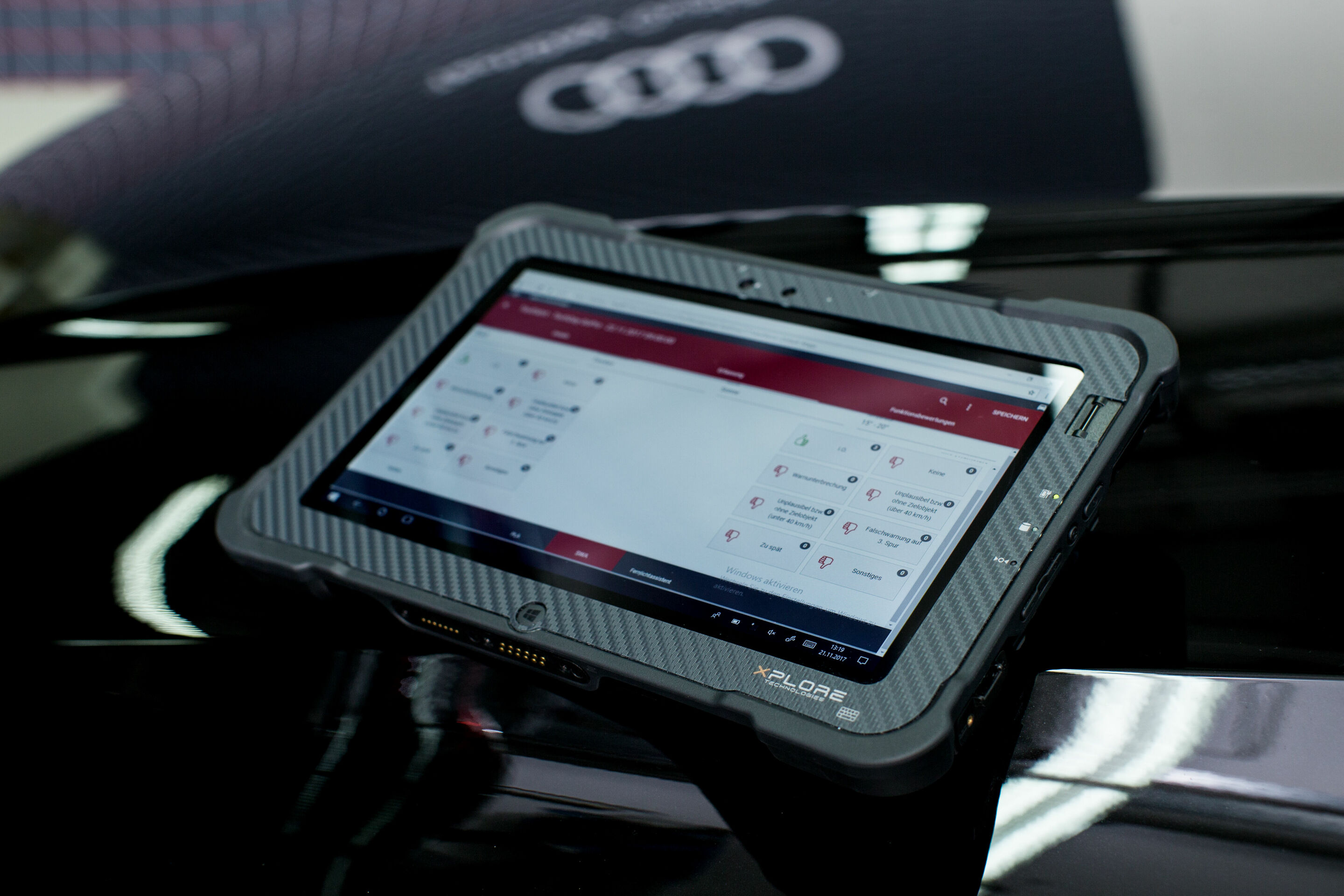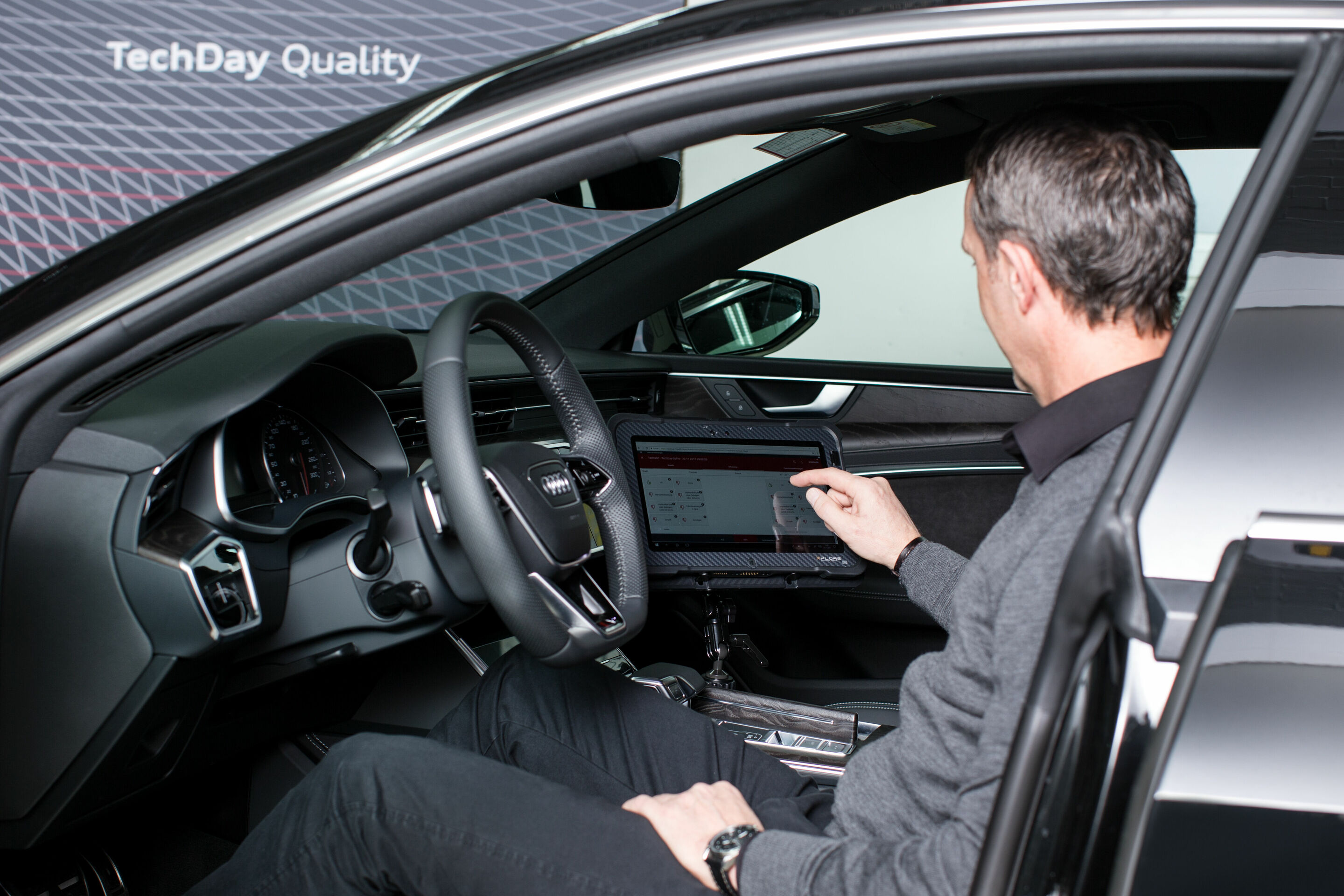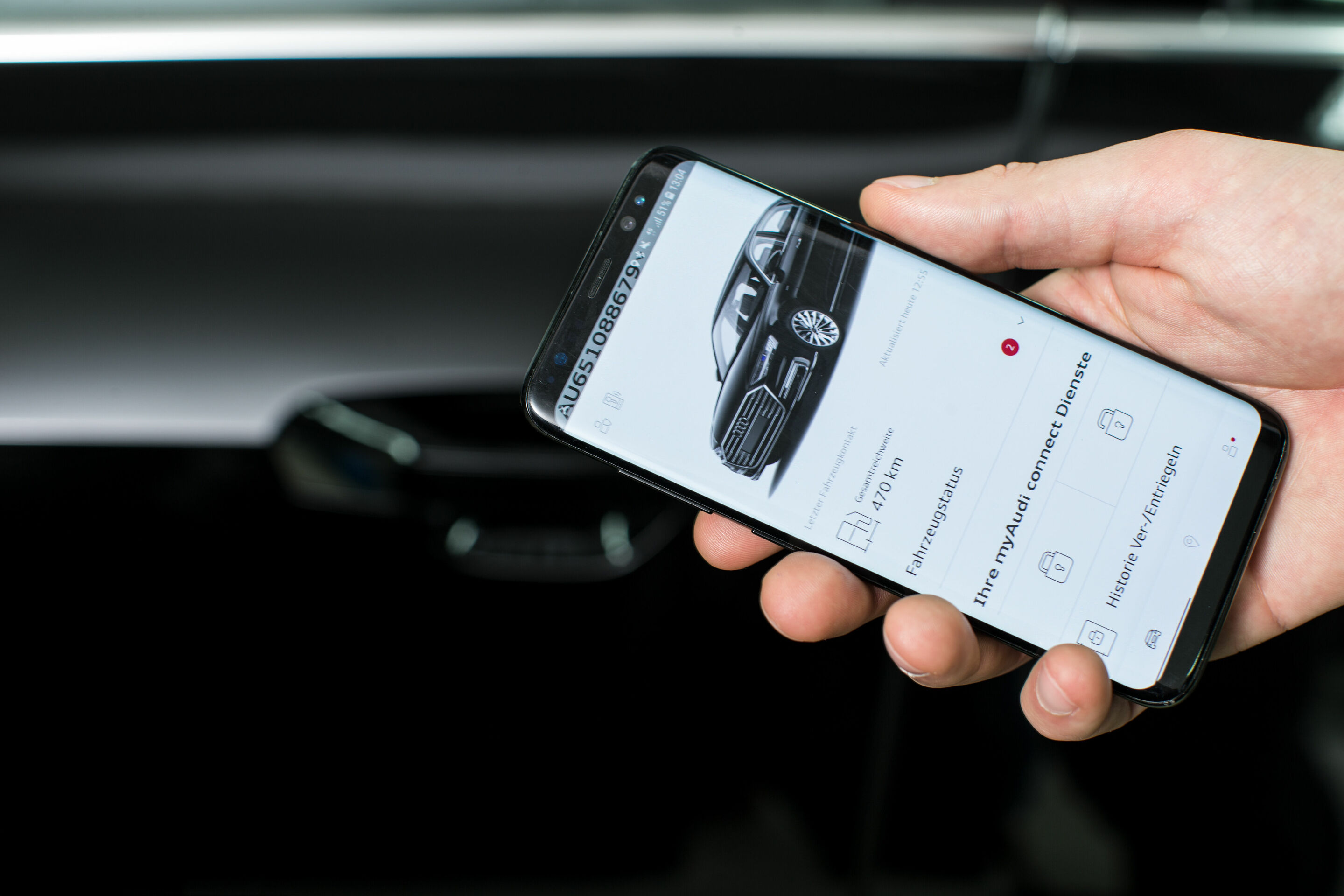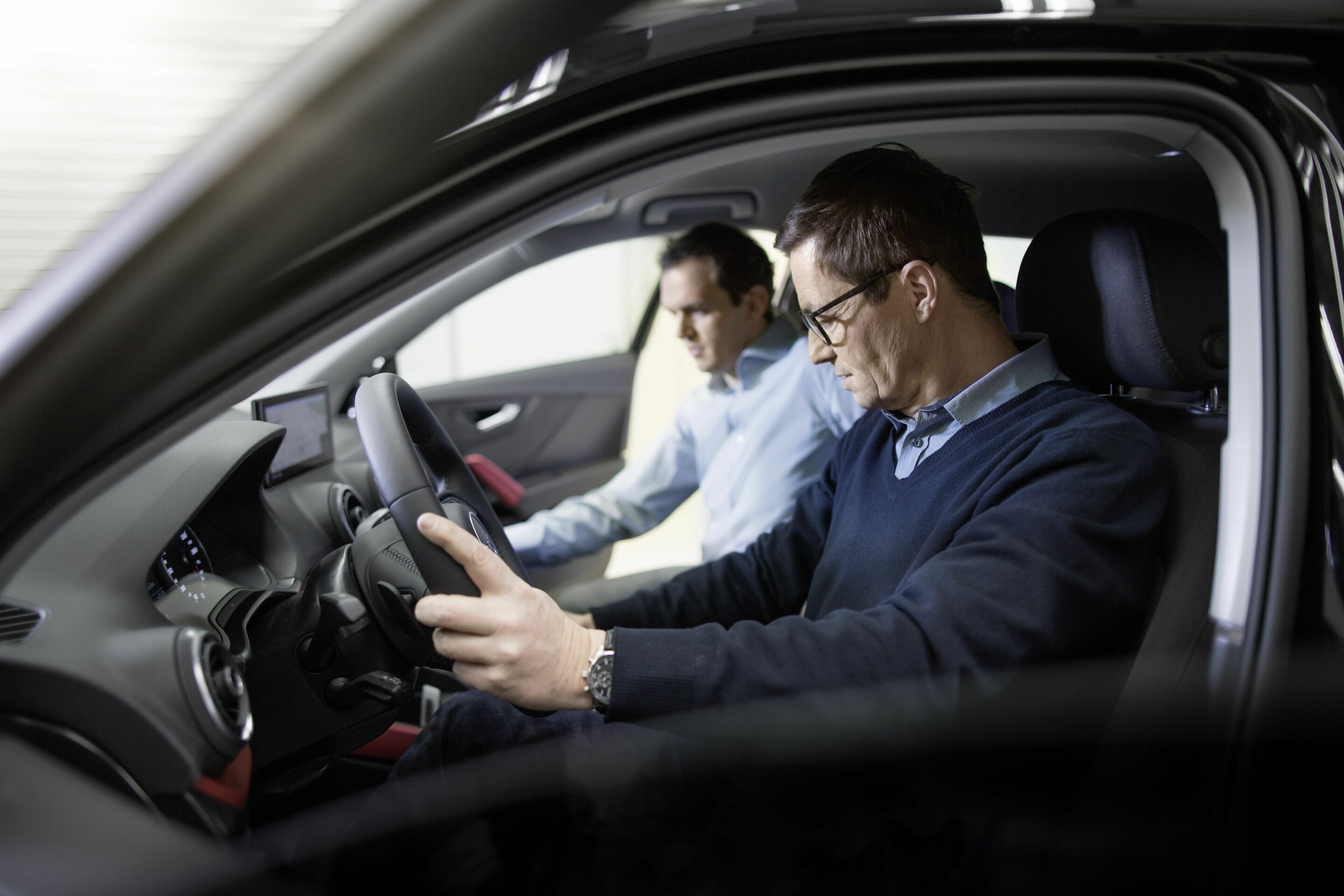Shakedown Testing
Back to overviewBefore a new Audi model receives approval for series production, shakedown testing is performed with pre-series vehicles. The focus is on the total vehicle with all its connected functions. Audi experts examine and assess all aspects that could possibly lead to customer complaints.
Planning of the pre-series vehicles with regard to equipment, location and driving profile begin two years before the actual shakedown testing. Shakedown testing begins roughly half a year before the start of production, when all parts from series production tools and the complete software of the new model are available. This leaves enough time to solve unexpected technical difficulties together with Technical Development and Production.
The vehicles are driven worldwide as customers are expected to drive them and thoroughly tested, analyzed and assessed. Major technical innovations coming into series production for the first time are validated by Audi with specially tailored test programs. If all parts and functions are ready for approval, new vehicle projects such as the new Audi A8 will be presented during an acceptance road test. This is where models receive the official total vehicle release for series production.
Shakedown testing stations
Shakedown testing takes place at 17 stations worldwide. To simulate customer operation, Audi tests pre-production vehicles in all climate zones in a temperature range of -30 to +50 degrees Celsius. A wide range of road conditions and traffic situations is also important. In addition to the quality of fuel, the charging infrastructure for battery-electric models has been gaining importance as a further shakedown criterion for some years now.
During shakedown testing, approximately 600 pre-production vehicles are driven over 50,000 to 100,000 kilometers (31,068.6 – 62,137.1 mi) under real-world conditions. Some of the cars are driven as many as 200,000 (124,274.2 mi) kilometers over a two to three-year period. All cars are equipped with special measurement cabling and data loggers so that any issues raised by the experts can be subsequently traced.
With increasing urbanization and digitization, there is also an increased focus on operating hours in addition to numerous test kilometers. The cars are driven on public roads under the same conditions as the customers will experience them later. In addition to the ergonomic layout of the design, the experts also check the component quality, the acoustics and the proper functioning of the connected systems. As part of shakedown testing, Audi covers around 35 million test kilometers (21,747,991.7 mi) annually in various countries and climate zones. This distance corresponds to around 875 trips around the world and approximately 700,000 operating hours.
In doing so, the reliability of the models is tested under extreme conditions in places ranging from metropolitan centers of the world right up to the cold climes of Scandinavia and even the arid climate of the desert in both the USA and Africa.
Extended quality validation
To gain insights in an early phase, extended quality validation is performed in collaboration with Technical Development even before the actual shakedown testing. The focus here is predominantly on electronics and electrical systems, such as the infotainment system and the driver assistance systems. A team of experts from Development and Quality Assurance takes to the road with specially configured vehicles. One of the goals is to identify errors in the control units and in their communication.
The cars used in extended quality validation have complex instruments on board, some of them the size of a large suitcase. In pairs, the drivers and co-drivers work through a special functional checklist. As part of this, they put the car and its systems under the most extreme loads. In the background, the instruments document all available data, which are used as the basis for later analysis.
The focus is on the customer
Different types of drivers participate in shakedown testing. Seldom and frequent drivers, women and men, young and old, large and small people, sporty and rather restrained drivers. They glean general impressions and assess special topics relating to all aspects of the car.
The increasing number of challenges posed by digitalization have led to an expansion of validation coverage in recent years. The numerous new connectivity functions are checked, of course. No shakedown testing is performed today without a smartphone and SIM card. “Customers have high expectations of their Audi,” said Arnd von dem Bussche-Hünnefeld, Head of Quality Assurance Total Vehicle. If a smartphone does not immediately connect to the car, the customer usually first pins this on the car manufacturer rather than the smartphone – even if that is where the problem lies. Therefore, these functions are systematically tested by Audi.
Complex instruments for data analysis
Quality Assurance staff use data loggers to deal with the vastly increased complexity of in-car data processing. These are about the size of a shoebox. They are installed in the car at the start of shakedown testing and operated there over the duration of testing. The data loggers are used at all sites worldwide and continuously collect vehicle data. In line with this, some 80 terabytes of data were recorded during shakedown testing of the new Audi A8, for example.
This ensures that requirements of global validation can be met. The use of data loggers makes possible both an in-depth analysis of all abnormalities on the entire vehicle as well as the tracking of the respectively selected validation level. Such continuous recording is the only way to detect sporadic errors.
The data recorded are analyzed continuously and automatically. If a problem is detected, a detailed analysis is carried out by the Quality Assurance experts. Then they define corrective actions and check their effectiveness in an additional shakedown.
Digitization and innovations in shakedown testing – automated driving
With the new Audi A8, Audi is placing a large number of new driver assistance systems into volume production and thus on the road. Prior to release, Quality Assurance staff have validated the functionality of all systems over many thousands of kilometers and the execution of defined scenarios. The engineers are currently working intently on the intelligent park assist.
“To validate the park assist, we parked a few thousand times. As part of this, it wasn’t a matter of how often, rather also about looking at as many different conditions as possible, such as the dimensions and orientation of the parking space, as well as the type of parking area. That’s why we also validate parking at various stations worldwide,” said Dr. Stefan Stümper from the Quality Assurance team for automated driving.
CarPad app
The use of mobile devices for data collection and the CarPad app make shakedown testing easier today. They allow an event-driven assessment and evaluation of complex vehicle systems. Where we previously had to fill in checklists partially by hand, the data entry now takes place by the quality experts using the dashboard tool of the CarPad app. Perpendicular spaces on the left, lane change assistant on the passenger side, maneuvering out of parking spaces – the driver can select the function which needs to be validated from a list and immediately display the result at the tap of a finger. He can record specifics of each individual driving maneuver in a comments field. The CarPad app synchronizes the data entered with Audi’s quality assurance databases via mobile radio or WiFi.
Total Vehicle Acoustics
In the premium segment, acoustics is a classic core competence of Quality Assurance. New technologies, especially the electrification of the powertrain, affect the acoustics of the total vehicle in many ways and lead to new challenges. It pays to listen carefully: cars with an electric drive are not completely silent, but rather bring completely new noise phenomena. Vibration analysis, i.e. the investigation of the noises and vibrations that occur during driving, must be rethought in the age of electric mobility. Audi uses innovative analysis methods.
Total Vehicle Acoustics staff analyze the various vibrations penetrating the interior of the car during driving. Due to the comparatively quiet electric motor, noises come to the fore that in conventional cars are drowned out by the sound of the internal combustion engine. The challenge in shakedown testing is to assess and locate intrusive noises. To analyze the different acoustic transmission paths, the acoustics technicians use modern instruments such as microphones or an artificial head that is equipped with two highly sensitive microphones and simulates the human ear. Even an accelerometer is used regularly. Experimental modal analysis is used here to visualize intrusive vibrations of structures.
Following the analysis, the acoustics experts work with Technical Development to develop solutions to attenuate, eradicate or dampen these noises. “During shakedown testing, we actively shape the sound of each Audi,” explained quality expert Andreas Wolf, Acoustics Total Vehicle. “An electrically powered Audi must sound just as high-quality as an Audi with an internal combustion engine.”
The Rustle and Rattle team
The finest of leather and shiny high-gloss trim elements in the vehicle are important component parts of a high-quality, premium ambiance. Touching, smelling and feeling an Audi is an experience in the truest sense of the word. Even slight, intrusive noises can disturb this feel-good atmosphere. Preventing these is the task of the experts in the Rustle and Rattle team. Their expertise lies in finding an optimal configuration comprising material pairings, design and fit.
A well-trained ear and sound technical understanding are the most important tools. Alert ears, absolute quiet in the car and a poor-quality road surface are the essential prerequisites for finding the source of intrusive noise. Here again, vehicle electrification leads to new challenges: the internal combustion engine is eliminated as one of the typical primary noise sources.
What remains are vehicle vibrations due to road conditions. Different materials in the car rub together ever so slightly. The longer a car is on the road, the more prominent these sounds become. With their wealth of experience, Audi acoustics technicians track down possible rub points and challenging material pairings to help eliminate unwanted noise during the early phase of development. This creates a special form of premium quality: the peace of mind the customer expects in the car.
Subject to change without notice; errors and omissions excepted.
